In 1980 Johnny Cecotto raced in the same racetrack twice in the space of two weeks and it felt like night and day: two completely different experiences. On 6 July, he rode a 500cc two-stroke four-cylinder Yamaha, while on 22 June he had been at the wheel of a Formula 2 March 802, powered by a BMW engine. The circuit was Zolder, in Belgium.
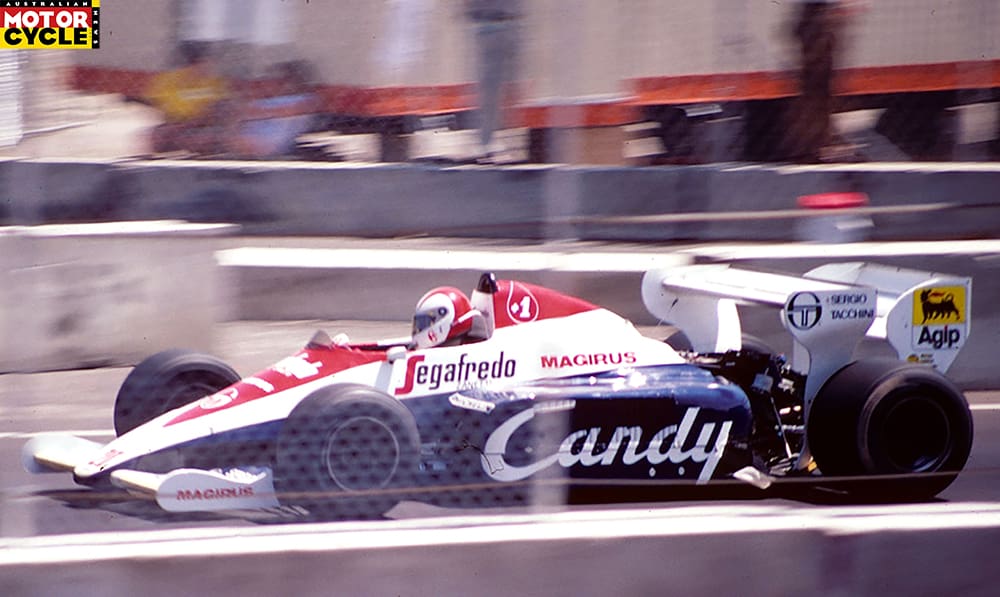
The Venezuelan ace, who already had two world titles under his belt after succeeding in the 350 and Formula 750 classes, was gradually switching from motorcycle to cars. Today the analogy comes easy: his path, like the ones of at least three other great motorcycle racers, links him to Valentino Rossi who recently ended his career in MotoGP and will focus on cars after over a quarter of a century in the Grand Prix circus, achieving nine world titles.

So what did his colleagues experience before him?
“About my two races in Belgium, shockingly it was like racing in different circuits,” Cecotto recalls over 40 years later. In other words, the difference, between two and four wheels, was huge. “The only thing I could rely on from my past was the sensitivity. The intensity in which I was able to feel the vehicle was similar. But all the rest was a completely separate world. Technically, there was no way to compare. The lines were different. Same story with the approach to the settings.”

Despite the challenging task, Cecotto was able to affirm himself as a fairly quick driver: he reached F1 in 1983 and impressed in just the second round of the season.
“It happened in the US, the circuit was Long Beach, driving on a street circuit,” says the two-time world champ. “At the end of the Friday practices I was in the top group and newspapers immediately celebrated my result. On Saturday I touched a wall with the rear wheel and compromised my qualifying, so I had to start from the back. During the race I recovered plenty of places and finished sixth, in spite of an issue with the gearbox.”

The South American, who later became teammate in the Toleman squad to the legendary Ayrton Senna, was stepping where one of his main past rivals already had. Italy’s 15-time world champion Giacomo Agostini, who in 1975 had been defeated by rookie sensation Cecotto in the 350 class, tried his luck with cars in the second half of the 1970s. And according to him, it was not an easy task.
“After many years racing motorcycles, the transition was really complex,” Agostini now admits. “I basically had to forget what I knew and learn new skills, which required energy and time.”
The sports were not only remarkably different in the technical aspects, but also from a racer’s mental point of view.

“When you first jump into the cockpit of a racecar you think it will be easy and safe, there’s less fear. You have the impression you’re more protected and there are less risks,” continues Ago. “If something goes wrong you’ll flip or something like that, while with a motorcycle you’ll hit your head and that has different consequences.”
That was true, especially for a rider who was successful in an era like the 1960s and early 1970s when circuits were dangerous and safety was not a priority. Every year, the list of deaths was heartbreaking.

“Of course, it affects one’s mind,” says Agostini. “Anyway, cars were not easy at all. When you start it may look like that, but in the end, to be half a second faster, when you’re already at the limit, is very difficult. It looked like there was no margin left. This, at least, was my experience.”
Ago mainly competed in the Formula 2 series and the British Aurora Formula 1. He recalls the most memorable difference between racing motorcycles and cars as being corner entry and acceleration.
“With my MVs and Yamahas I had to brake earlier and make sure to keep the engine in the correct RPM range so I was able to quickly exit the corner,” he says. “With a racecar, apart from the feeling of being supported by four and not two wheels, I could brake deep into the corner and then count on an enormous amount of power and torque. We’re probably talking about 130hp versus 700hp. So basically with a motorcycle you needed to be smoother, while with a car it was more a stop-and-go style.”
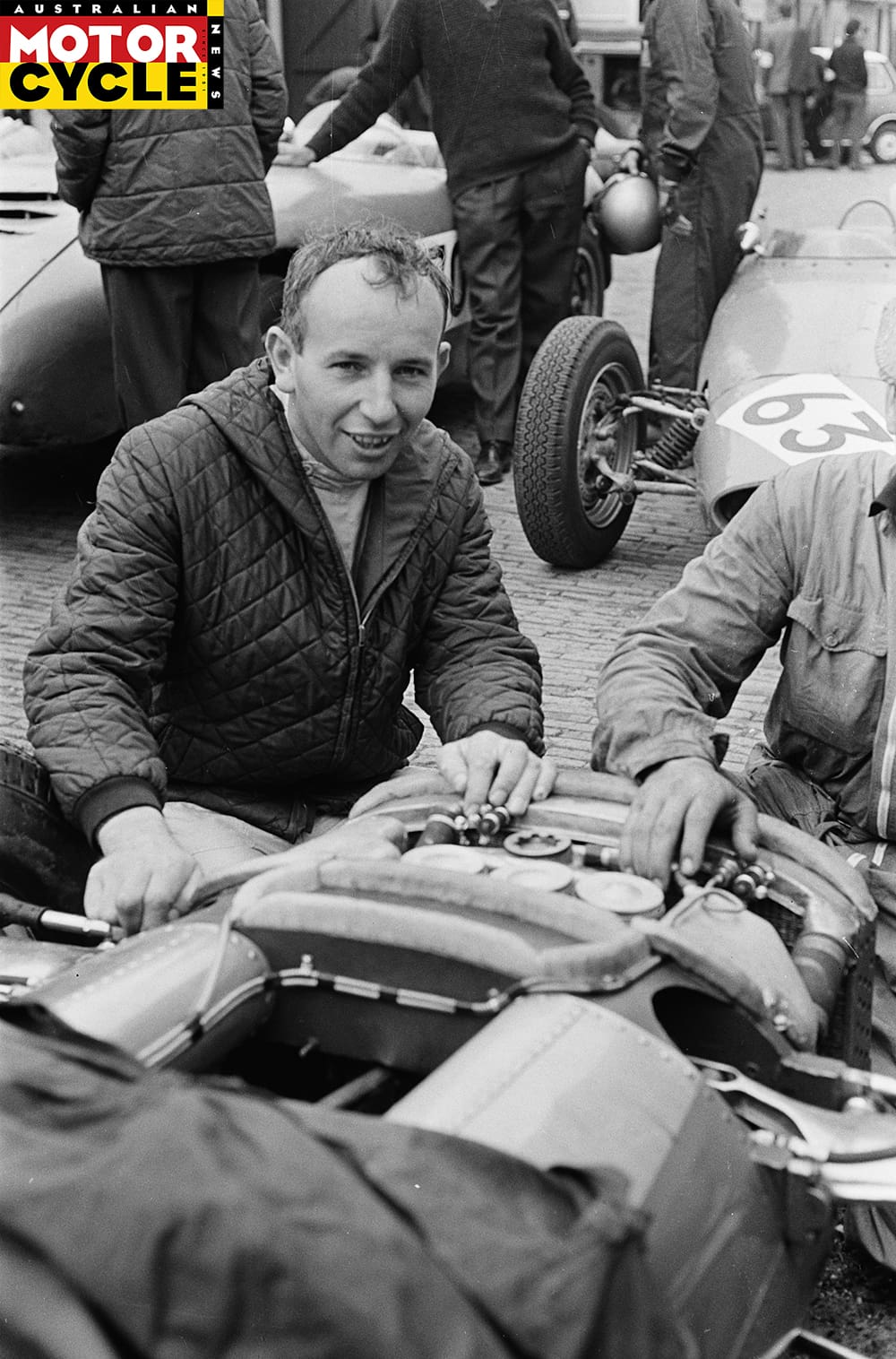
Agostini says he acted mainly out of curiosity and not with real ambitions, while Cecotto on the other hand had an interest in cars since he was a teenager.
“When I took part in my first-ever motorcycle race in Venezuela, my dad was not happy,” Cecotto says. “He was against it. I had to bust his balls in order to obtain his permission. I was 16.
“At the first corner of the race I was dead last because I had no experience in the push start and was riding a 750cc Honda. I recovered and reached third place. Then the chain broke. My dad was in the stands, watching. He later told me: ‘You’re good, but please wait a couple of years and I’ll support you in car racing’. I said ‘Sure, I’m interested in cars. Until you support that, though, I’ll race motorcycles.”
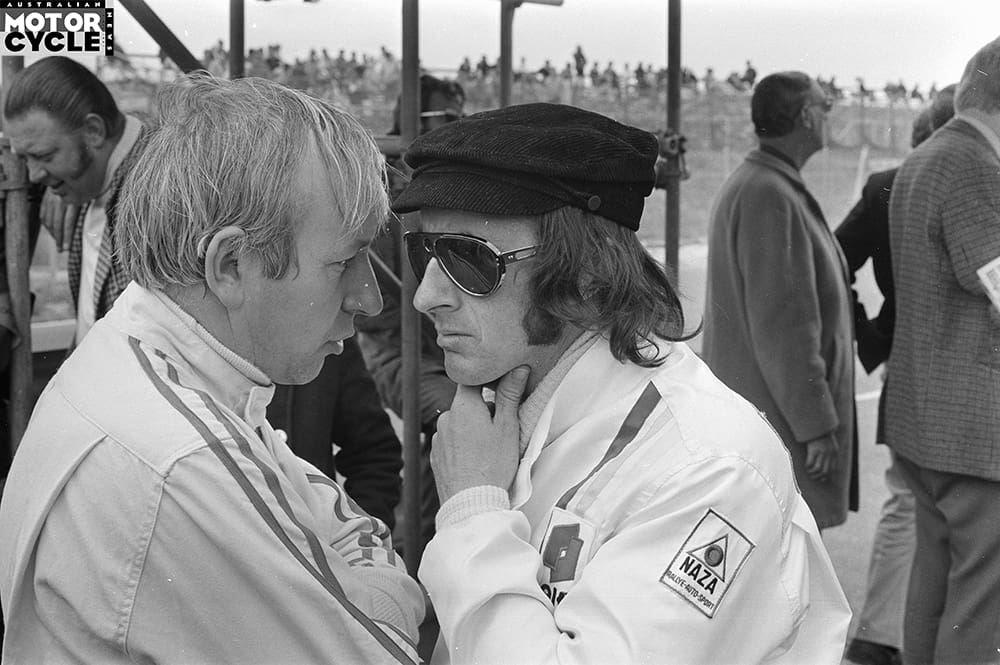
During their careers, both Cecotto and Agostini crossed paths with a young Italian rider who quickly compromised his career due to a dramatic crash. In the mid-1970s, Vinicio Salmi was able to seriously challenge the superstars of the period, but ended up in a hospital.
More than a decade later he was racing cars in the US and won the Vancouver race of the Indy Lights series in 1990.
“Going from motorcycles to cars was not that tricky, while I guess that doing the opposite would have been more difficult,” he now considers.
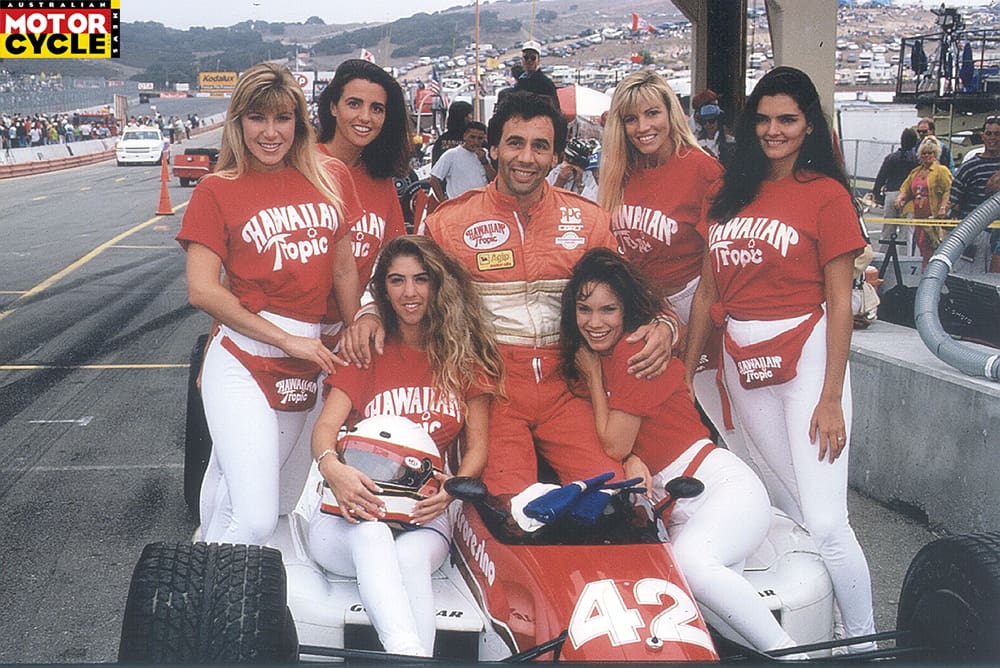
“With two wheels you mainly need talent, while with four you can learn. Anyway, those cars were pure adrenaline. No power steering, no service brake, no buttons whatsoever. Real men stuff, not for everybody – you needed muscles in your arms in order to change gears. Good feet. And a lot of sensitivity in your rear end –that’s where you felt the car’s behaviour.”
His comments are similar to Cecotto’s and find support in the voice of another legend of motorcycle racing who, after winning seven world titles in the top classes between 1956 and 1960, switched to cars and was able to clinch a world title with Ferrari in 1964, becoming the only man ever to win a championship in the two disciplines. His name was John Surtees.

In a 2014 interview with NBC, he spoke about his transition:
“I had to obviously learn to deal with all sorts of different conditions and a bit of track craft was different, but the actual ability to relate to the car and communicate with it – which is what you have to do, it’s just as you’re racing a bike – that came along quite well.”
In the 1960s, making the switch from motorcycles to cars was already seen as a special and bold move, while in the early days of motorsports the distinction was not so clear. Car racing icons Tazio Nuvolari and Achille Varzi (AMCN Vol 71 No 15), for example, had both started on two wheels in the early decades of the past century. In that era it was not a matter of being a rider or a driver: it was all about being able to go fast, whatever the vehicle involved.

Through the years, motorsports became more and more complex, the evolution involving vehicle technology, racetracks, tyres and so on. The value of riders and drivers also changed, with safety finally being considered, contracts and deals, mental coaches and stress. Somebody who seemingly faced everything with a smile was British star Mike Hailwood who, like Rossi, won nine titles on two wheels. In the 1960s, when he was successful as a rider, he raced on a few different occasions with cars and his four-wheel focus became more serious at the end of the decade. He scored third place at the 1969 24 Hours of Le Mans driving a Ford GT40, he was crowned the 1972 European F2 champion and twice stood on the podium in F1.

In that period though, probably the fastest former motorcyclist was Frenchman Jean-Pierre Beltoise. He won the 1972 F1 Monaco GP and clinched several podiums in the category across his career.
And what about drivers who became riders? Seven-time F1 world champion Michael Schumacher was one of them: he raced in the German SBK championship and also scored a test ride on Casey Stoner’s 2007 MotoGP championship-winning Ducati Desmosedici and Max Biaggi’s Aprilia RSV4.
Damon Hill, the son of Graham Hill, won the F1 title in 1996, long after he actually started his racing career by winning the Brands Hatch 350 title on two wheels.
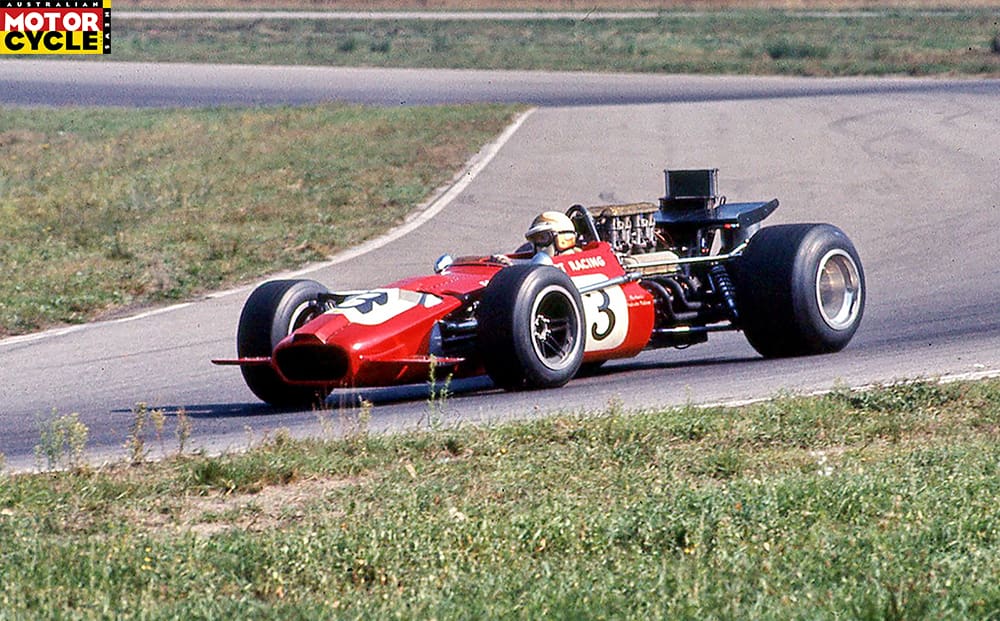
During the 1990s Biaggi tested a Ferrari and later Rossi would do the same. ‘The Doctor’ also swapped vehicles with Lewis Hamilton, driving the F1 Mercedes at the Valencia racetrack in 2019. Looking back at the Italian’s history, his interest for cars shouldn’t come as a surprise. The first engined vehicle he ever piloted was a go-kart and his father Graziano, a former rider with three GP wins in the 250 class, wanted him to be a driver.
After numerous outings in rally cars in the past, now Valentino has signed up to race the GT World Challenge Europe Championship for the 2022 season and recently admitted he would like to race the 24 Hours of Le Mans.
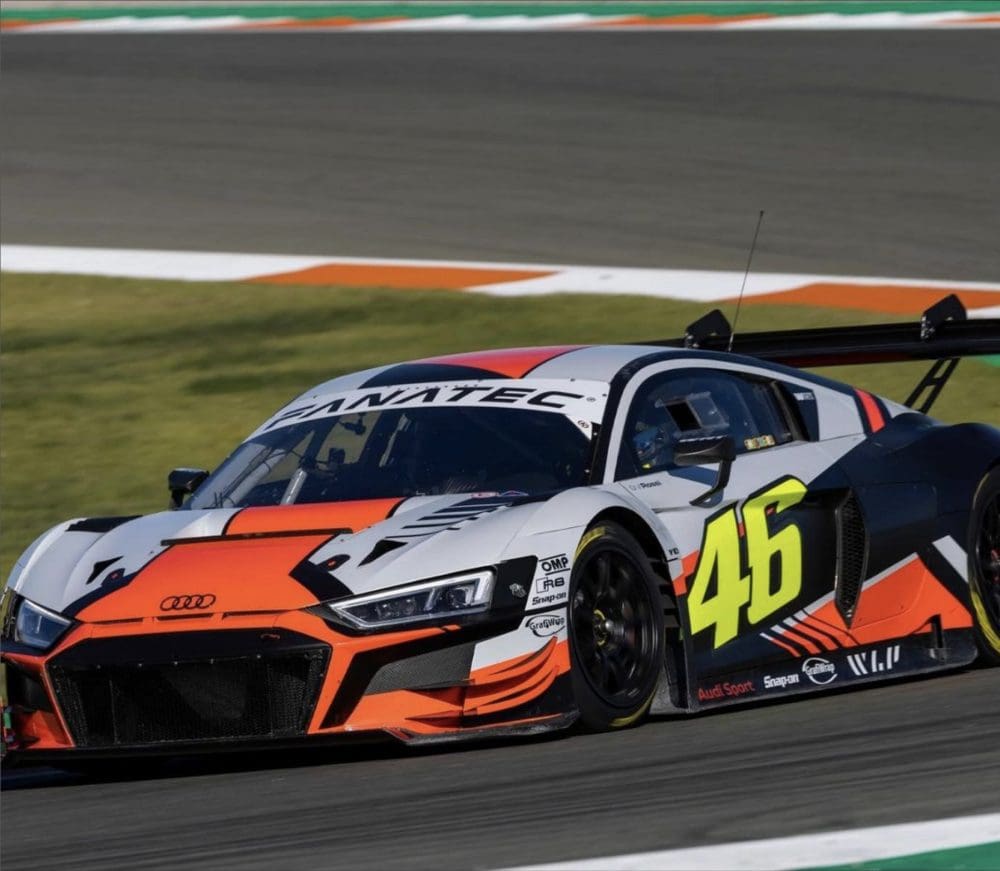
That is a race in which Hailwood finished third in 1969, one spot ahead of Beltoise. Five years before that Surtees was on the podium, while in 1981 Cecotto finished 16th.
Expecting a rookie sportscar driver in his 40s to emulate the feats of some of those names would be a big call, particularly since Rossi is racing in the GT3 class, not the outright ‘Hypercar’ category – at least for now.
But if Valentino’s career has taught anyone anything it might just be that writing off his chances of winning anything has never quite gone to plan…
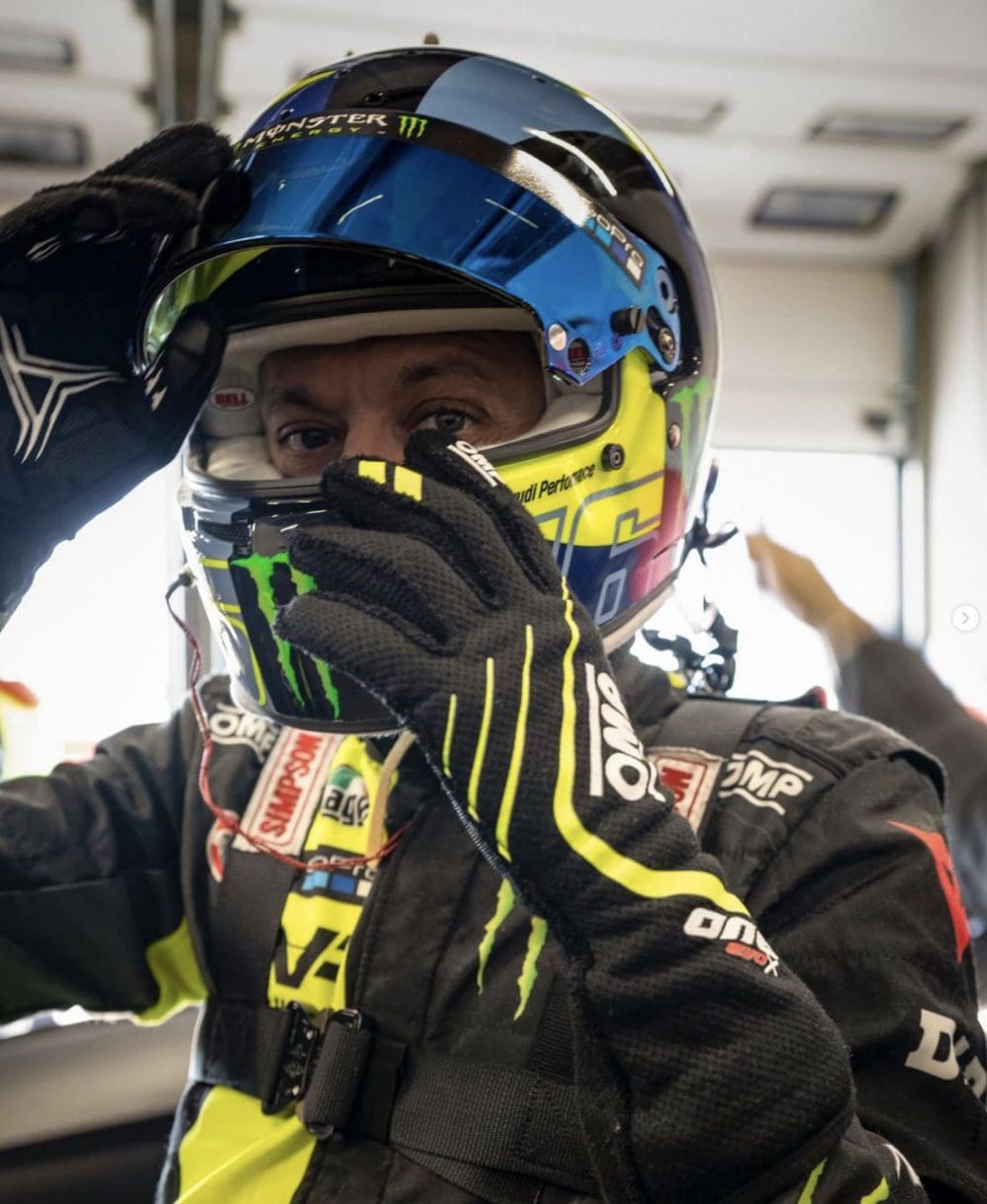
Two into four
Plenty of Aussie riders have made the switch, too
Two Australian greats of grand prix racing have tried their hands at car racing. Both 1987 500cc world champ Wayne Gardner and two-time world champ Casey Stoner made the switch to Australia’s domestic V8 Supercar series after they’d retired from two wheels.
Gardner made a full-time switch for the 1993 season after a co-driver appearance in the 1992 Bathurst 1000. The former Honda ace found the going hard and, despite scoring a podium in his debut season with the crack Holden Racing Team, his on-track antics earned him the nickname ‘Captain Chaos’.
Gardner stuck it out for a few more years in Australia, launching his own Coca Cola-backed team and notching up a couple of race wins and pole positions before turning his attention to the All-Japan Touring Car Championship with Toyota, but stopped at the end of 2002.
Ten years later, Stoner announced he would make the switch to supercars for the 2013 season, saying at the time it was always in his game plan.

“It was always my plan during my whole career to drive a V8,” Stoner said. “Since I was 12, I’ve always been interested in it.”
And like all the men who tried before him, the switch took a lot of mental rewiring.
“The hardest thing I have had to do is change whatever I know about braking and changing through gears,” he said. “I am having to rethink again. I have to forget everything I know about bikes and change to learn to drive these.”
Gregg Hansford scored wins at the iconic Mount Panorama street circuit in Bathurst on both two and four wheels, and was the only man to do so, while the likes of Kevin Magee, Daryl Beattie, Chris Vermeulen and even Mick Doohan all raced or tested a V8 Supercar after their GP careers came to an end.

kel Buckley
Words Jeffrey Zani Photography Zani, G&G, BMW motorsport